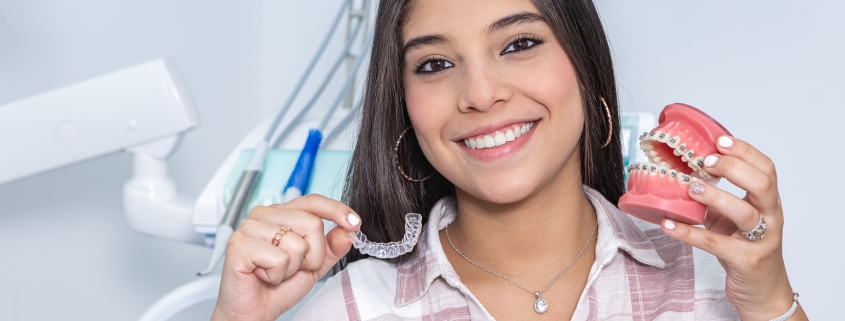Navigating the World of Orthodontics
Orthodontics, the branch of dentistry focused on correcting misaligned teeth and jaws, offers a variety of treatments to help individuals achieve straighter smiles and improved oral health. From traditional braces to modern aligner systems, the options can seem overwhelming. In this article, we’ll explore the different types of orthodontic treatments available, highlighting their features, benefits, and considerations.
1. Traditional Braces:
Traditional braces have been a cornerstone of orthodontic treatment for decades, and they remain a highly effective option for correcting a wide range of dental issues. They consist of metal brackets bonded to the teeth and connected by wires and elastic bands. Braces apply gentle pressure to gradually move teeth into their proper positions over time.
Benefits:
Suitable for all ages and most orthodontic issues.
Highly effective for complex cases requiring significant tooth movement.
Customizable with colored bands for a personalized touch.
Considerations:
Visible metal brackets and wires may affect aesthetics.
Regular adjustments and maintenance appointments are required.
Proper oral hygiene is essential to prevent plaque buildup and decay.
2. Ceramic Braces:
Ceramic braces offer a more discreet alternative to traditional metal braces. They feature tooth-colored or clear brackets and wires that blend in with the natural color of teeth, making them less noticeable. Ceramic braces work similarly to metal braces, applying gentle pressure to shift teeth into alignment.
Benefits:
Less noticeable than traditional metal braces.
Suitable for individuals concerned about aesthetics.
Effective for correcting moderate to severe orthodontic issues.
Considerations:
Ceramic brackets may be more prone to staining from foods and beverages.
Treatment may take slightly longer compared to metal braces.
Regular oral hygiene is necessary to maintain clear brackets and prevent staining.
3. Lingual Braces:
Lingual braces are placed on the back surface of the teeth, making them virtually invisible from the front. They work similarly to traditional braces, using brackets and wires to gradually move teeth into alignment. Lingual braces are custom-made for each patient and offer an aesthetic option for individuals seeking discreet orthodontic treatment.
Benefits:
Invisible from the front, providing a discreet treatment option.
Effective for correcting a wide range of orthodontic issues.
Customized for each patient’s unique dental anatomy.
Considerations:
Lingual braces may be more challenging to clean compared to traditional braces.
Some individuals may experience initial discomfort or speech changes.
Treatment may be more costly compared to other orthodontic options.
4. Clear Aligners:
Clear aligners, such as Invisalign, have gained popularity in recent years for their discreet and convenient approach to orthodontic treatment. These custom-made, transparent trays gradually move teeth into alignment through a series of incremental changes. Clear aligners are removable, allowing for easier eating, brushing, and flossing.
Benefits:
Virtually invisible, offering a discreet treatment option.
Removable for eating, brushing, and special occasions.
Comfortable and less likely to cause irritation compared to braces.
Considerations:
Clear aligners are best suited for mild to moderate orthodontic issues.
Compliance with wearing aligners for the recommended duration is essential for successful treatment.
Treatment may require more frequent dental appointments for progress checks and adjustments.
Choosing the Right Treatment
Selecting the right orthodontic treatment depends on various factors, including the severity of your orthodontic issues, your aesthetic preferences, lifestyle considerations, and budget. Consulting with an experienced orthodontist is essential for evaluating your needs and developing a personalized treatment plan tailored to achieve your smile goals.
Whether you opt for traditional braces, ceramic braces, lingual braces, or clear aligners, the goal remains the same: to achieve a straighter, healthier smile that enhances your confidence and overall well-being. With the diverse range of orthodontic options available today, achieving the smile of your dreams has never been more accessible.

